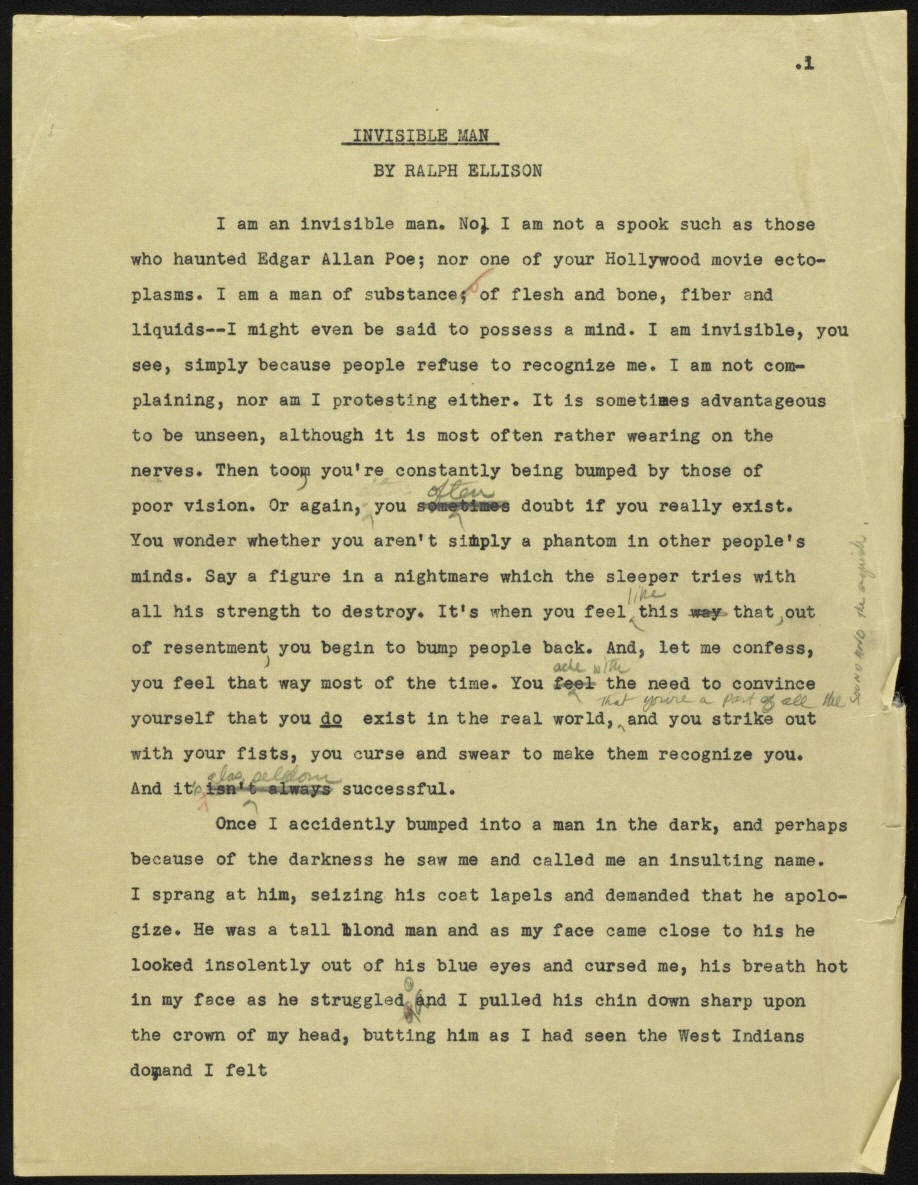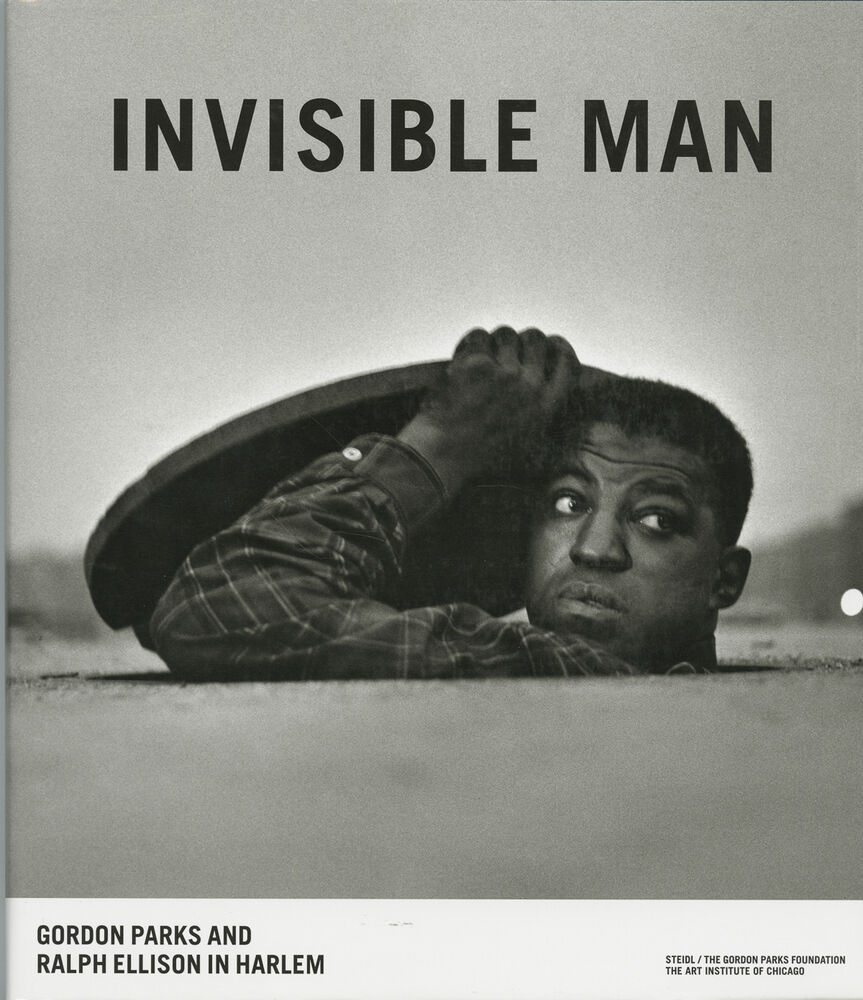
#Invisible man ralph ellison wikipedia how to
Next Section Invisible Man Summary Buy Study Guide How To Cite in MLA Format Peterson, Cameron. Over the years it has been awarded with numerous accolades, such as the Russwurm Award, National Book Award, Rockefeller Foundation Award, and Prix de Rome Fellowships from the American Academy of Arts and Letters. Overall however, the book was greeted positively. The Left also was a harsh critic, finding the novel to be pretentious and otherworldly. Harsh criticism came from a minority of the Afro-American community who claimed that the novel displayed contempt toward blacks. It received favorable reviews by both white and black audiences, although it was also met with some negative reviews. The complete novel was then published in April of 1952. Subsequently, in the early months of 1952, he published the Prologue of the novel in the Partisan Review. In 1948, he published the same section in the American magazine, Magazine of the Year. In October of 1947, Ellison published the battle royal chapter as "Invisible Man" in the British magazine, Horizon. 'Invisible Man' (By Ralph Ellison) Guy comments on the SOCIAL invisibility of African-Americans in U.S. The narrator, an unnamed black man, begins by describing his living conditions: an underground room wired with hundreds of electric lights, operated by power stolen from the city's electric grid. Ellison then spent seven years working on the novel, The Invisible Man. Invisible Man has been listed as a level-5 vital article in Art. Invisible Man, Ralph Ellison Invisible Man is a novel by Ralph Ellison, published by Random House in 1952. He nearly rejected the idea but was intrigued and decided to give it a try. In this vein, he suddenly wrote, "I am an invisible man".

It has the dimensions of 174 by 250. One day in 1945, Ellison sat at his typewriter in Vermont, thinking of an ironic joke he had heard from a black face comedian about his family becoming so progressively dark in complexion that the new baby's mother could not even see her. After 'Invisible Man' by Ralph Ellison, the Prologue is a color photograph by Jeff Wall created in 19992000. He decided to write a novel about black identity, heroism, and history through the use of the folklore, spirituals, blues, comedians, archetypes, and personal experiences he had gathered over the years. Also influenced by the likes of Sophocles, Homer, Dostoyevsky, Freud, Jung, Wright, and others, he began to think about black leaders and wondered why they ignored their constituents but often bent over backwards for the white man. He spent time reading Lord Raglan's The Hero which discusses African-American mythical and historical figures. He took a sick leave as the War wound down in 1945 and moved with his wife to recuperate in Vermont.

He contracted a kidney infection and became depressed. While in the Merchant Marines during World War II, Ellison struggled with writing a prison camp novel. This event provided the background for the climax of the novel, the race riot, which finally succeeds in driving the narrator underground in The Invisible Man. In 1943, he was hired to cover a riot in Harlem. Another experience which was later encapsulated into his novel was his work in freelance writing. This quotation is verbatim out of his FWP encounters. For instance, Mary Rambo's character advises the narrator of the novel to not let New York corrupt him. Many of the conversations he recorded he then used when he was writing The Invisible Man.

Through his work, he came into close contact with a variety of people and thus became better adept at producing realistic characters in his writing.

Harvard Classics 51 books that were said to be the equivalent of a College education.Ellison gained valuable writing experience while working for the Federal Writers' Project between 19.Notable eBook Uploads Available at MobileRead.1000 Novels everyone should read - 2009Īccording to Joseph Luzzi, a professor at Bard College the 8 books that have changed the world include: The Bible, Homer's Odyssey, Dante's Divine Comedy, and Shakespeare's Hamlet then closer to today Virginia Woolf's To the Lighthouse, Ralph Ellison's Invisible Man, Harper Lee's To Kill A Mockingbird and Joseph Heller's Catch 22.The 100 greatest non-fiction books of all time - 2011.15 additions based on user input - submitted list of addition novels in 2015.The 100 greatest novels of all time - 2003.The 100 best novels written in English - 2015 from Robert McCrum.Here is some links, from The Guardian web site.


 0 kommentar(er)
0 kommentar(er)
